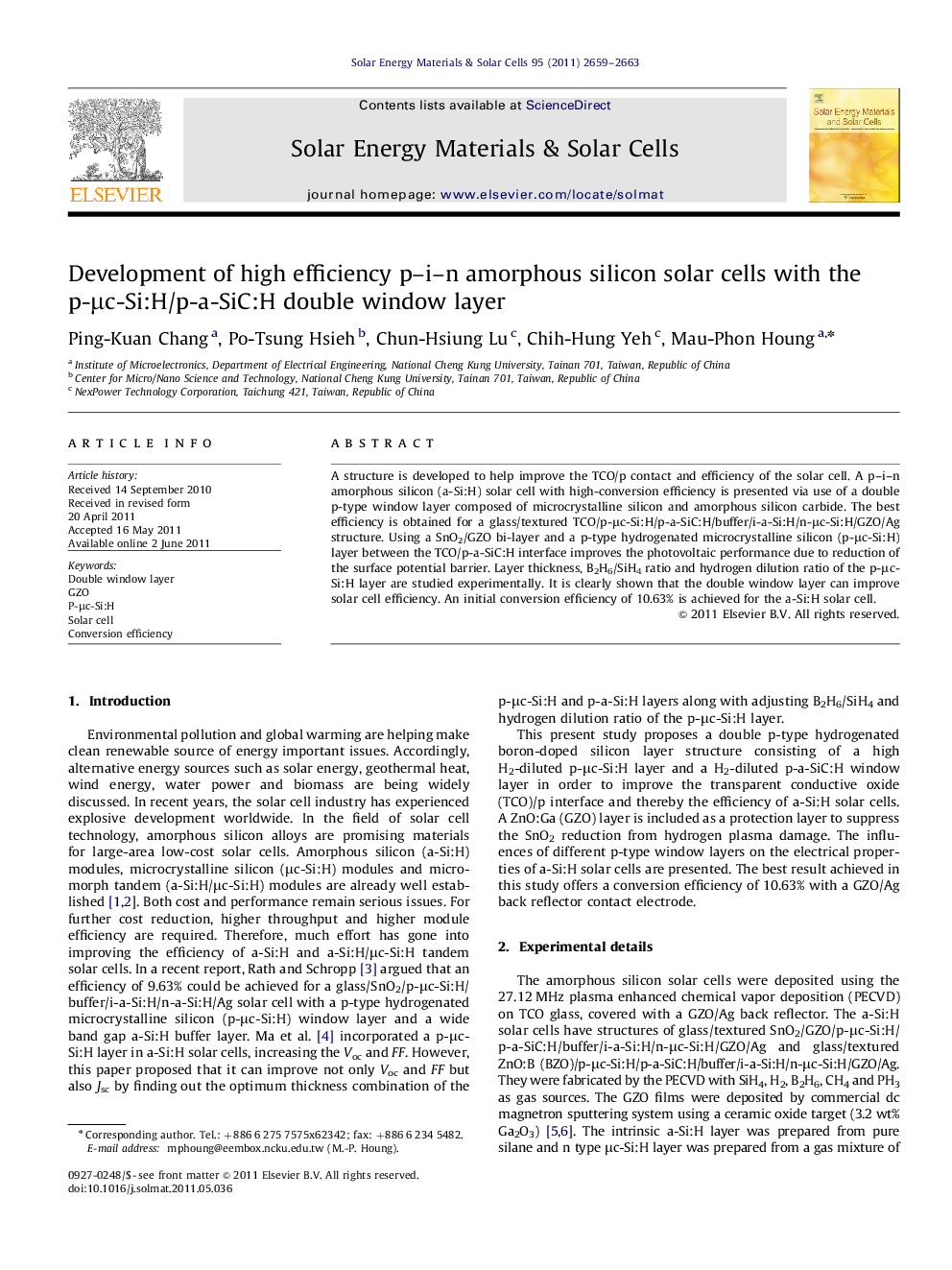| Article ID | Journal | Published Year | Pages | File Type |
|---|---|---|---|---|
| 78730 | Solar Energy Materials and Solar Cells | 2011 | 5 Pages |
A structure is developed to help improve the TCO/p contact and efficiency of the solar cell. A p–i–n amorphous silicon (a-Si:H) solar cell with high-conversion efficiency is presented via use of a double p-type window layer composed of microcrystalline silicon and amorphous silicon carbide. The best efficiency is obtained for a glass/textured TCO/p-μc-Si:H/p-a-SiC:H/buffer/i-a-Si:H/n-μc-Si:H/GZO/Ag structure. Using a SnO2/GZO bi-layer and a p-type hydrogenated microcrystalline silicon (p-μc-Si:H) layer between the TCO/p-a-SiC:H interface improves the photovoltaic performance due to reduction of the surface potential barrier. Layer thickness, B2H6/SiH4 ratio and hydrogen dilution ratio of the p-μc-Si:H layer are studied experimentally. It is clearly shown that the double window layer can improve solar cell efficiency. An initial conversion efficiency of 10.63% is achieved for the a-Si:H solar cell.
Graphical abstractThe QE of the cells with p-a-SiC:H and p-μc-Si:H window layers, respectively. The are depsited on (a) SnO2/GZO TCO and (b) BZO TCO substrates.Figure optionsDownload full-size imageDownload as PowerPoint slideHighlights► TA-Si:H solar cells with high-conversion efficiency are presented via use of p-μc-Si:H/p-a-SiC:H double window layer. ► Layer thickness, B2H6/SiH4 and H2/SiH4 ratio of p-μc-Si:H are studied experimentally. ► The a-Si:H solar cells with the p-μc-Si:H layer show increased the Jsc in the wavelength region of 350–600 nm. ► An initial conversion efficiency of 10.36% is achieved for a-Si:H solar cells.
